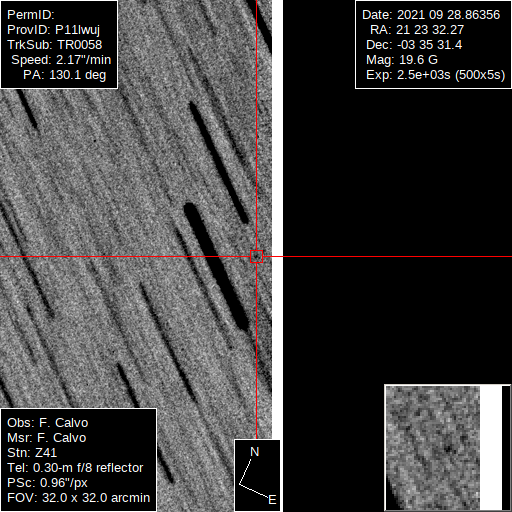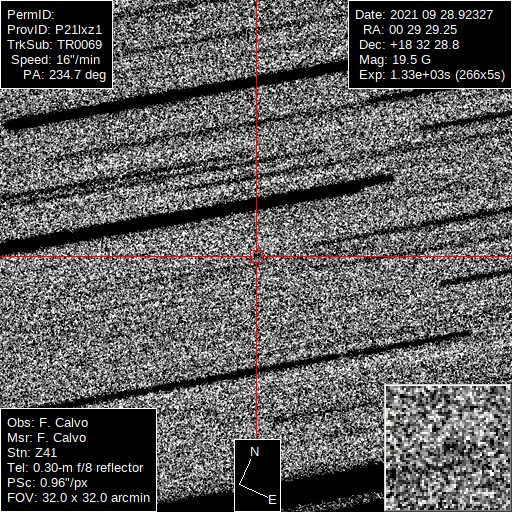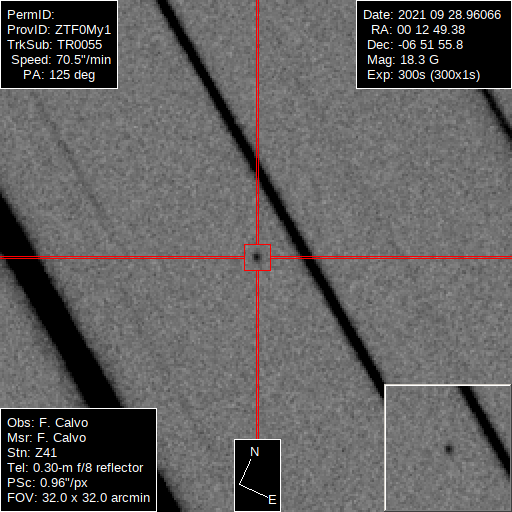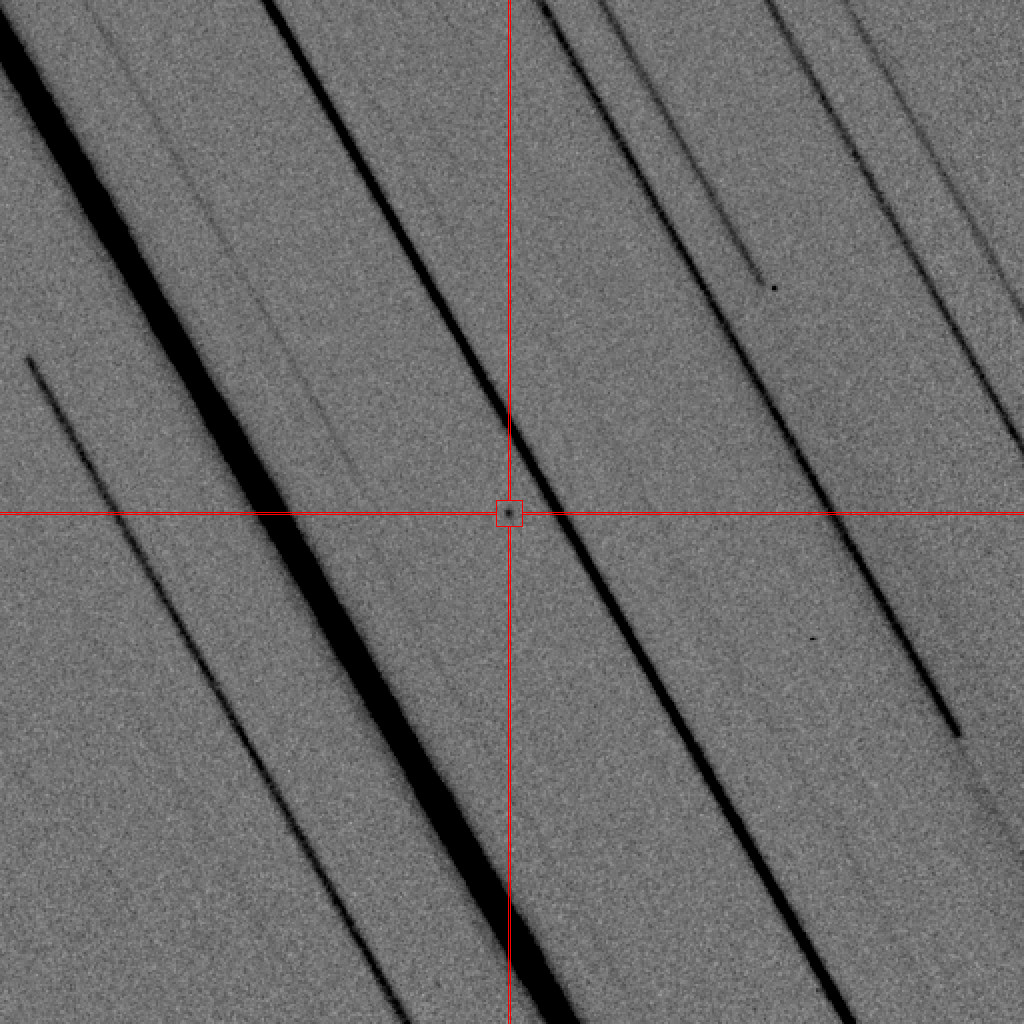ZTF0My1
On the night of September 28, 2021, we focused on three objects observed for the first time that same day, which required confirmation and astrometric follow-up in order to be classified:
-
P11lwuj: This was an object with an apparent slow motion, about 2" per minute, around 20th magnitude and which at the time barely had the four observations relative to its discovery, further complicating matters.
After several hours of tracking and inspection of the field, it could be located far from the position fixed by the theoretical ephemerides, at a distance of nearly 30 minutes, there it was, at the edge of the Ritchey-Chretien camera field:
 .
.Being so on the edge, all the shots where it already went out of the field were completely discarded (namely 220).
It has not been an easy object at all, but as they say.... and it is a great honor to see that a few hours later, on the morning of the next day (September 29), P11lwuj was officially classified as 2021 SU1 and there, humbly, we appear in its first confirmation, next to professional observatories, which have massive telescopes.
2021 SU1 has been catalogued as a NEO with Atem orbit, a pedrush that is only 17 meters in diameter and that at the time of its capture was 3.8 million kilometers away from us (almost 14 times the distance to the Moon).
-
P21lxz1: The second object of the night seemed to be somewhat simpler; on the contrary. The first measurements after its detection were erroneous even in its apparent velocity, which made me make exposures longer than necessary, losing sharpness and definition. From the few seconds per minute marked by the ephemeris, we went to 16"/min and from a magnitude around 18, to almost 20... a madness that made me almost give it up as impossible and think that it was a false positive.
After a very careful analysis of the data I had... it turned out that something appeared, of course, a miracle, given the circumstances... and yes, there it was, with little signal, which forced me to extreme the calculation of the centroid, but it was there.

Again, another nice parto; most curious of all is that P21lxz1 was neither more nor less than the recovery of a NEO already discovered in 2019, named 2019 SF6 with few observations and to which we have contributed together with Pan-STARRS 1 and Pan-STARRS 2, to have it well located.
2019 SF6 was cataloged as a NEO with Atem orbit, an estimated size of 20 meters and that at the time of the September 28 hunt was 6.7 million kilometers from our heads.
-
ZTF0My1: We are looking at the last one in the planning for the night of September 28; a somewhat brighter object, but one that was crossing us at a devilish speed of 70" per minute, forcing the capture of very short shots.
In this case, the ephemerides were more accurate, although with an error of several minutes, there it appeared, clearly and without confusion:
 .
.Finally, just a few hours later, on September 29, ZTF0My1 was classified as 2021 ST1, a NEO with an Apollo orbit, a size of only 14 meters and that upon capture was somewhat closer than the previous two asteroids, at only 1.8 million kilometers.
A complex yet precious, fun and exciting night, one of those where you understand the reason for so much work, time and resources invested.
Analysis
MPCReport
More information:
-
P11lwuj:
-
P21lxz1:
-
ZTF0My1:


